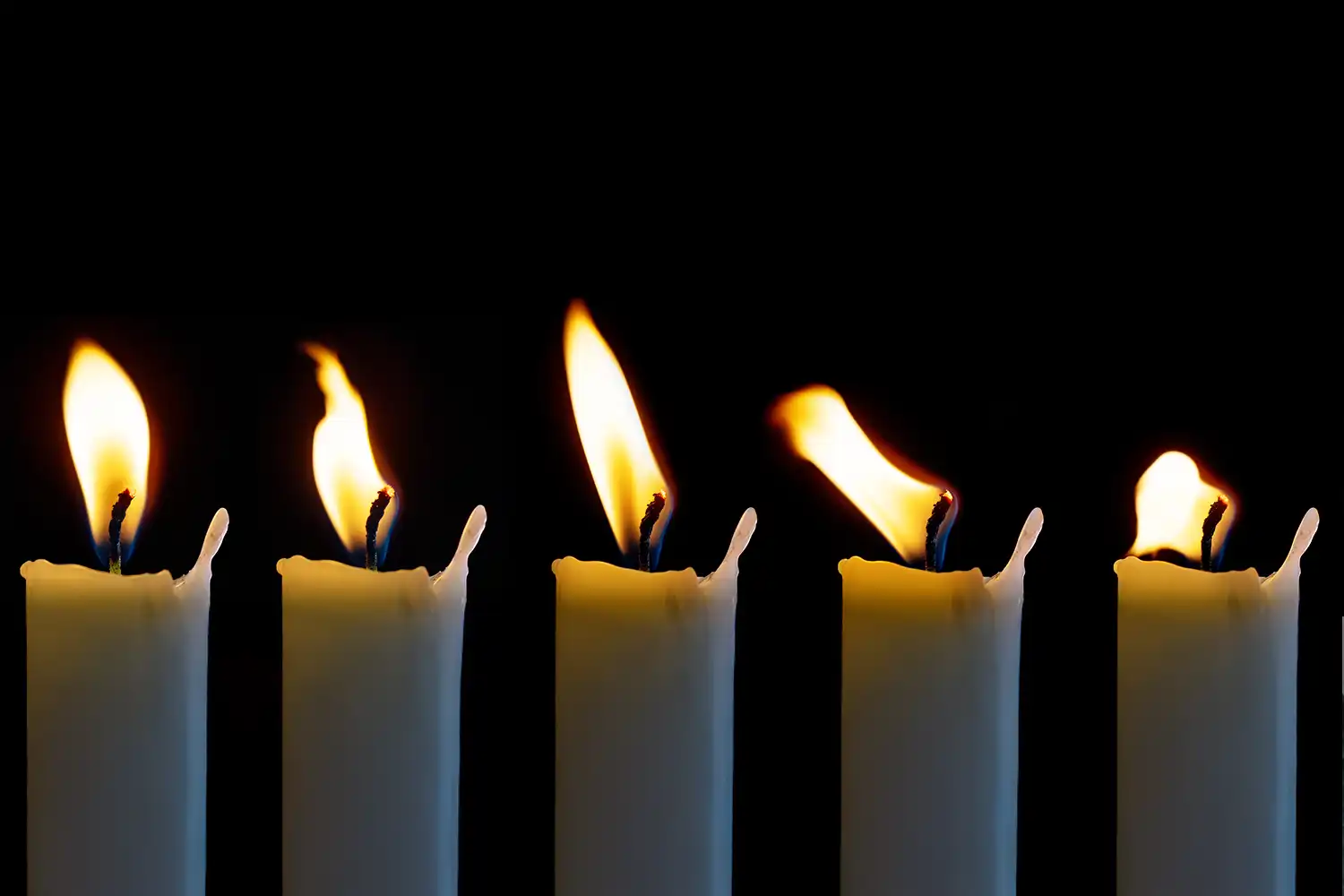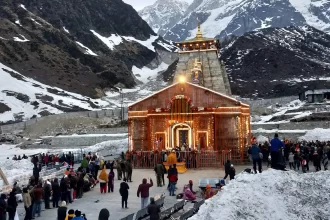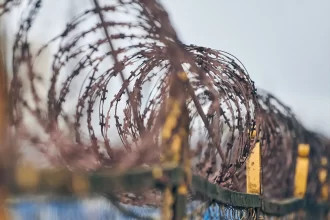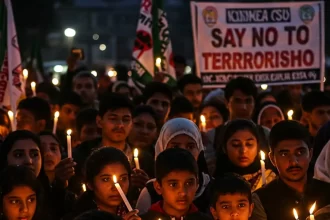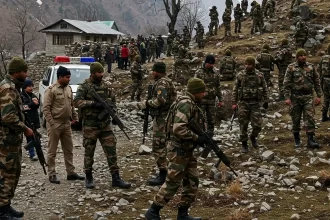Pahalgam, a beautiful tourist destination in Jammu and Kashmir, was shaken on April 22, 2025, by a horrific terrorist attack that claimed the lives of at least 26 individuals, most of whom were tourists, and injured several others. This senseless act of terrorism, one of the deadliest in the region after the 2019 Pulwama attack, sent shock waves throughout India and the world, casting a shadow over the thriving tourism business of Pahalgam. This article provides a detailed account of the Pahalgam attack, its impact, and the responses of the authorities and residents alike, giving details on what happened and what it means for the future of this valued valley.
What Happened in Pahalgam?
The terror attack in Pahalgam occurred between 2:30 PM on Tuesday at Baisaran Meadow, a popular destination known as the “Mini Switzerland” of Kashmir, 6 km from Pahalgam town in Anantnag district. A group of 3-4 terrorists, reportedly linked with Lashkar-e-Taiba, emerged from the nearby forests and opened indiscriminate firing on picnickers, pony riders, or individuals enjoying the scenic beauty of Pahalgam. Witnesses described pictures of chaos, with gun fire and screams filling the air as people scrambled to take cover.
Survivors of the attack reported that the attackers targeted individual tourists, with some of the accounts suggesting they checked victims’ identities before shooting. The attack left 26 people dead, including Maharashtra, Gujarat, Odisha tourists, and two foreigners from the UAE and Nepal. Also killed were a 43-year-old employee of SBI from Surat, a young Indian Navy officer from Haryana, and an Intelligence Bureau official from Hyderabad. Several others were injured, some of them in critical condition at GMC Anantnag hospital.
Why Pahalgam? A Setback to Tourism
Pahalgam, a tranquil valley known for its lush meadows, pine trees, and proximity to the Amarnath Yatra track, has been a corner stone of Jammu and Kashmir’s economy. The region has seen a blitz of tourists since 2018, when thousands flocked to Pahalgam in spring to witness it come alive with flowering valleys. The fact that the attack came during peak tourist season was a deliberate punch to Pahalgam’s economic lifeline and the narrative of normalcy in Kashmir after the 2019 revocation of Article 370.
Industry insiders fear that the Pahalgam attack would deter tourists in the future, with travel operators reporting cancellations for June bookings. Hotels in Pahalgam and other districts like Srinagar are also witnessing early check-outs, as tourists get stranded due to the closure of the Jammu-Srinagar highway following flashfloods and landslides. The attack reopened memories of past violence, such as the 2000 Amarnath pilgrim attack, jeopardizing Pahalgam’s reputation as a safe destination for tourists.
Immediate Action and Security Steps
The Jammu and Kashmir Police and Indian Army promptly conducted a search operation in Baisaran, Pahalgam, to track down the perpetrators, who were believed to be taking refuge in the surrounding hills. Helicopters and rescue teams were dispatched to take the injured individuals to safety, and the site was sealed by security forces. Delhi Police and other state police forces enhanced vigilance at tourist places throughout the nation to prevent such attacks.
Prime Minister Narendra Modi shortened his Saudi Arabia visit to handle the crisis and held a meeting on landing back in Delhi with National Security Advisor Ajit Doval and External Affairs Minister S Jaishankar. Home Minister Amit Shah hastened to Srinagar to review security, which reflected the seriousness of the government. J&K Chief Minister Omar Abdullah called the Pahalgam attack “much larger than anything we’ve seen directed at civilians in recent years,” as the death toll remains under verification.
Global and Local Condemnation
The Pahalgam attack caused international condemnation by global leaders like US President Donald Trump, Russian President Vladimir Putin, and Nepal PM KP Sharma Oli, who expressed support to India against terror. Trump spoke of “full support” and Oli said there were efforts to verify if a Nepali national was among the dead. Locally, candle processions in Srinagar, Baramulla, and Akhoor’s Khod village deplored the killings, with locals holding slogans like “tourists are our life” to deplore the violence.
Locals of Pahalgam, whose livelihood is based on tourism, were in despair and frustration. Gulzar Ahmad Wani, president of the Pahalgam Taxi Association, told ANI, “It’s not just tourists; the livelihood of our families has been hit. We want justice.” Political leaders like Maharashtra CM Devendra Fadnavis and Deputy CM Eknath Shinde criticized the attack, with Shinde requesting special flights to return stranded Maharashtra tourists to their home state.
Survivors’ Terrifying Experiences
Pahalgam survivors recounted terrifying moments. Nagpur tourist Pallavi, who was widowed as her husband Manjunath lost his life in the attack, told NDTV, “The attackers focused only on men and especially Hindus. There were around 500 of us tourists and they spared a few women and some children.” Yet another Maharashtra-based survivor reported about the assailants arriving in camouflage fatigues, first wrongly identified as security forces, until they fired indiscriminately. These accounts by witnesses highlight the brutality and selective brutality of the Pahalgam attack, which only fueled public indignation further.
Investigation and Theories
Security personnel took into custody a black Pulsar motorbike without a number plate, which is suspected to be used by the attackers, showing there was prior surveillance. The Resistance Front, a splinter group of Lashkar-e-Taiba, claimed responsibility for the attack, and that it was carried out when US Vice President JD Vance was in India also drew suspicion of foreign manipulation. The attack is credited by some media reports to recent statements by Pakistan’s Army chief, though investigations are ongoing. The size and nature of the Pahalgam attack point to a grave intelligence failure, and calls have been made for accountability.
Impact on Pahalgam’s Future
The Pahalgam attack has instilled terror in tourists, who are canceling travel plans to Kashmir. Air India said it would operate extra flights from Srinagar to Delhi and from Delhi to Mumbai to facilitate evacuations, but the shut Jammu-Srinagar highway has stranded thousands. The tourism industry, a source of important revenues for Pahalgam, has a difficult recovery ahead, as the attack negates years of sales efforts promoting Kashmir as a secure destination. Local businesspeople call for urgent justice to restore confidence in Pahalgam’s appeal.
How Authorities Are Supporting Victims
The Jammu and Kashmir government has also set up helplines for stranded tourists, including the Srinagar Emergency Control Room (0194-2457543) and Anantnag Police Control Room (9596777669). The Tourism Department has provided numbers like 8899931010 for assistance. The injured are receiving treatment at Anantnag and Srinagar hospitals, with a few Gujarat tourists reporting stable conditions. The government is also coordinating with states like Maharashtra to ensure safe repatriation of the families of victims.
A Call for Resilience
The Pahalgam tourist attack brings to mind the ordeal of Jammu and Kashmir, even as it grapples towards peace and development. Pahalgam, with its peaceful environs and welcoming people, has been a longstanding reminder of the charm of Kashmir, and this tragedy cannot define its fate. As investigations continue and security is increased, the resilience of Pahalgam’s people and solidarity among world and local communities hold out promise. Authorities must act firmly to prosecute the offenders and make Pahalgam remain a tourist destination safe for visitors.

